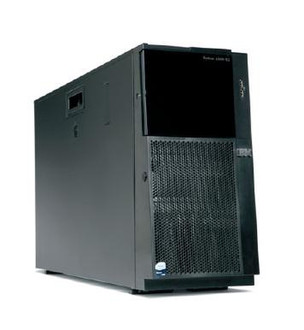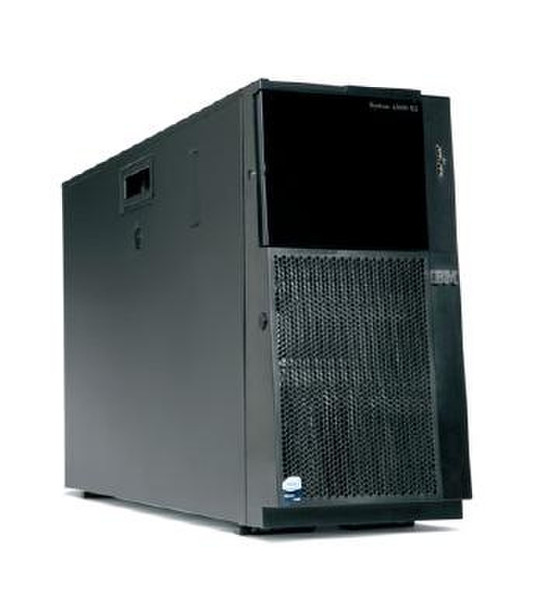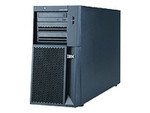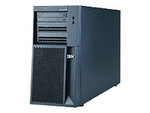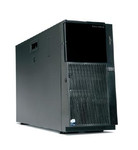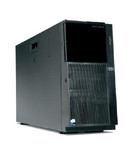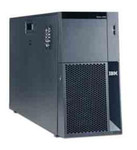Katalog
-
Katalog
- Antiquitäten & Kunst
- Auto & Motorrad: Fahrzeuge
- Business & Industrie
- Bücher
- Büro
- Camping & Outdoor
- Computer & Elektronik
- Essen, Getränke & Tabak
- Fashion & Style
- Feinschmecker
- Foto & Camcorder
- Garten & Terrasse
- Gesundheit & Beauty
- Haus, Bau, Renovierung
- Haushaltsgeräte
- Haustierbedarf
- Heimwerken & Garten
- HiFi & Audio
- Kinder
- Kleidung & Accessoires
- Kraftfahrzeuge & Zubehör
- Medizinische Geräte, Zubehör & Versorgungsmaterialien
- Modellbau
- Musik
- PC- & Videospiele
- Sammeln & Seltenes
- Spielzeug
- Sport & Erholung
- TV, Video, DVD
- Telekommunikation
- Uhren & Schmuck
- Unterhaltung & Hobby
- Waffen & Munition
- Wellness & Beauty
- institutional food services equipment
Filters
Search
IBM eServer System x3400 M2 2GHz E5504 670W Turm (5U) Server
MPN: 7837KAG
🚚 Liefern nach:
Lieferung aus:
Deutschland
Verkauf und Lieferung durch:
Wo kaufen und Preise (Werbung *)
nach Oben
Technische Daten
nach Oben
Prozessor Besonderheiten
| Intel® Virtualisierungstechnik für direkte I/O (VT-d) | Y |
|---|---|
| CPU Konfiguration (max) | 2 |
| Intel® Dual Display Capable Technology | N |
| Intel® Clear Video Technologie | N |
| Intel® 64 | Y |
| Intel® Insider™ | N |
| Intel® Quick-Sync-Video-Technik | N |
| ARK Prozessorerkennung | 40711 |
| Intel® Virtualization Technologie (VT-X) | Y |
| Intel® Trusted-Execution-Technik | N |
| Intel® Flex Memory Access | N |
| Intel® Fast Memory Access | N |
| Intel® Rapid-Storage-Technik | N |
| Intel® Turbo-Boost-Technologie | N |
| Intel® Clear Video Technology für Mobile Internet Devices (Intel® CVT for MID) | N |
| Intel® My-WiFi-Technik (Intel® MWT) | N |
| Intel® Enhanced Halt State | Y |
| Intel® Hyper-Threading-Technik (Intel® HT Technology) | N |
| Intel® Anti-Theft Technologie (Intel® AT) | N |
| Intel® Smart Cache | Y |
| Intel® Clear Video HD Technology für (Intel® CVT HD) | N |
| Intel® Wireless-Display (Intel® WiDi) | N |
| Intel® Demand Based Switching | Y |
| Verbesserte Intel SpeedStep Technologie | Y |
| Intel® FDI-Technik | N |
| Intel® VT-x mit Extended Page Tables (EPT) | Y |
| Intel® vPro™ -Technik | N |
Prozessor
| Eingebettete Optionen verfügbar | Y |
|---|---|
| FSB Gleichwertigkeit | N |
| Konfliktloser-Prozessor | N |
| Physical Address Extension (PAE) | Y |
| Speicherkanäle, vom Prozessor unterstützt | Triple |
| Durch den Prozessor (max) unterstützte Speicherbandbreite | 19.2 GB/s |
| Speichertaktraten, vom Prozessor unterstützt | 800 MHz |
| Prozessor Cache Typ | Smart Cache |
| Prozessor-Code | SLBF9 |
| Physical Address Extension (PAE) | 40 bit |
| Thermal-Überwachungstechnologien | N |
| Leerlauf Zustände | Y |
| Execute Disable Bit | Y |
| Thermal Design Power (TDP) | 80 W |
| Anzahl der QPI links | 2 |
| Prozessor-Cache | 4 MB |
| Anzahl installierter Prozessoren | 1 |
| Anzahl Prozessorkerne | 4 |
| CPU-Multiplikator (Bus-/Kernverhältnis) | 15 |
| Prozessor Lithografie | 45 nm |
| Prozessor-Paketgröße | 42.5 mm |
| Prozessor-Taktfrequenz | 2 GHz |
| Stepping | D0 |
| Prozessorsystemtyp | DP |
| Prozessorbetriebsmodi | 64-bit |
| Bus typ | QPI |
| Speichertypen, vom Prozessor unterstützt | DDR3-SDRAM |
| ECC vom Prozessor unterstützt | Y |
| Tcase | 76 °C |
| Maximaler interner Speicher, vom Prozessor unterstützt | 144 GB |
Speichermedien
| Hot-Swap | Y |
|---|---|
| Gesamtspeicherkapazität | 293.6 GB |
| Festplattenkapazität | 146.8 GB |
| Festplatten-Schnittstelle | Serial Attached SCSI (SAS) |
Speicher
| Speichertaktfrequenz | 1333 MHz |
|---|---|
| RAM-Speicher | 4 GB |
| Interner Speichertyp | DDR3-SDRAM |
| RAM-Speicher maximal | 96 GB |
| Speichersteckplätze | 12x DIMM |
Grafik
| Maximaler Grafikkartenspeicher | 16 MB |
|---|
Weitere Spezifikationen
| Festplattencontroller | ServeRAID M5014 |
|---|
Anschlüsse und Schnittstellen
| Serielle Anschlüsse | 1 |
|---|---|
| Anzahl VGA (D-Sub) Anschlüsse | 1 |
Energie
| Stromversorgung | 670 W |
|---|
Netzwerk
| Netzwerkfunktionen | Gigabit Ethernet |
|---|
Design
| Gehäusetyp | Tower (5U) |
|---|
Zusätzlich
| InTru™-3D-Technik | N |
|---|---|
| Intel® AES New Instructions (Intel® AES-NI) | N |
| System-Bus | 4.8 GT/s |
| Grafikkarte | G200eV |
| Anzahl Ethernet-LAN-Anschlüsse (RJ-45) | 2 |
1x Intel Xeon Quad-Core E5504 (2.0Ghz, 4MB L3), 2 x 2GB PC3-10600R-999 DDR3 Chipkill 1333 MHz RDIMM, 2 x 146GB SAS HD, Multiburner, 2x Broadcom 5709C Gigabit Ethernet, SVGA (16 MB) video, 670 W
Ähnliche Angebote
nach Oben
-
Zahlungsarten
Wir akzeptieren:


